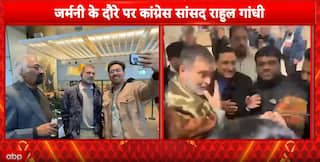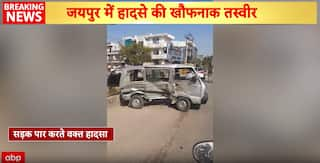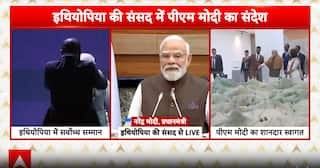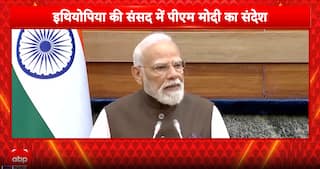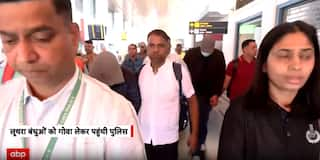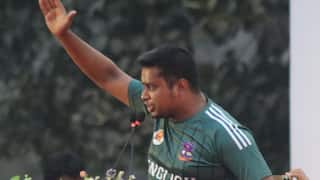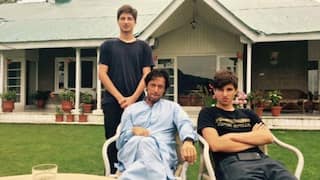Maharashtra Day Explained: How 107 People Gave Their Life To Make Mumbai, A Part Of Maharashtra | 1 May 1960
1st of May, apart from being International Workers Day, is also celebrated as Maharashtra Day. Maharashtra attained full statehood along with the city of Mumbai on 1 May, 1960. But in the struggle for Maharashtra, many sacrifices were made. This article is a short history of those sacrifices.

New Delhi: Marathi-speaking people celebrate 1 May as Maharashtra Day every year. It is also the statehood Day of Gujarat state. It is the day when the state of Maharashtra was formed including the city of Mumbai. A long struggle had led to a separation of the erstwhile Bombay state into two states of Maharashtra and Gujarat. A total of 107 people lost their lives after the then Chief Minister of Bombay state, Morarji Desai gave a ‘shoot at sight’ order. The demands of the people were simple: ‘Mumbai-yukt Maharashtra’ which translates as Maharashtra along with Mumbai.
But how did it all boil down to this?
Formation Of States On Linguistic Basis
India became an independent country on 15 August 1947. But the problems of India were far from over. The famous magazine ‘The Economist’ wrote: “India is a continent masquerading as a country”.
India had many languages and it was decided that the states would be divided on the basis of language. In 1953, the Telugu-speaking people demanded a separate state, which led to the formation of Andhra Pradesh from the erstwhile state of Madras. But, the country was divided on allotting separate states based on language. The SK Dar Commission rejected the proposal for separate states on a linguistic basis. But the demand for separate states was rising. Such demands for separate states based on languages were raised across the country.
In December 1953, The Fazal Ali Commission announced various different states, which also included Andhra Pradesh for Telugu-speaking people. But this commission was not able to find a solution for the separation of Maharashtra and Gujarat. Maharashtra’s demand for a separate state was not as straightforward as the other states. Let us know why.
The Sanyukta Maharashtra Samiti
Maharashtra got the status of a separate state on May 1, 1960. It took 13 years after Independence to form a state. Why did it take so long for a state to be formed if it was decided that the states would be formed on a linguistic basis? The answer lies in the history of Sanyukta Maharashtra Samiti (SMS). The SMS was one umbrella organization that fought for a separate state of Maharashtra which also included the city of Mumbai. Let’s dwell on some history first.
The SMS was established in 1946 under the leadership of Congressman Shankarrao Deo. Its aim was to make sure that Mumbai becomes a part of Maharashtra once the formation of states was announced.
In 1953, The Fazal Ali Commission had proposed that there would be three separate states of Mumbai, Maharashtra, and Gujarat that would be carved out from the state of Bombay. This proposal became a reality when the government announced that two states of Maharashtra (including parts of Vidarbha and Marathwada) and Gujarat (including Kutch) would be formed while Mumbai will remain under the administration of the central government on 8 November 1955.
This irked the Marathi-speaking people of Mumbai. The Sankyukta Maharashtra Samiti was angered by this decision and decided to aggressively campaign against this. On 18 November 1955, Mumbai’s Churchgate Station saw hordes of Marathi-speaking people giving the slogans of ‘Mumbai-yukt Maharashtra. Mumbai by then was already an established center for commerce and trade and thus the capitalist lobbies did not want the city to be out of their clutches. The chief minister of Bombay state, Morarji Desai was against the idea for a separate Maharashtra with the city of Mumbai. On 20 November 1955, Desai along with Congress leader S.K. Patil did a rally at Mumbai’s Girgaon Chaupati. In the rally, the CM said that Mumbai won’t be a part of Maharashtra as long as Congress is present in the country. S.K. Patil also said, “As long as there is sun and moon, Mumbai won't be part of Maharashtra.”
After this statement by Patil, the demand for a separate state including Mumbai became poignant. The statements made by Desai and Patil acted as catalysts for an uproar against the sitting government. An angry Acharya Atre, who was the editor of the newspaper Maratha wrote, “Are sun and moon the slaves of Patil’s father?” Back then, a lot of news publications and magazines were also writing against the government’s decision of creating three separate states.
The Retaliation
On 21 November 1955, just a day after Morarji Desai’s rally, there was a common protest organized by various political factions in Mumbai and across Maharashtra. This was the day when the protests turned violent. Lakhs of people marched towards the Hutatma Chowk, which was called Fountain back then. The police were unable to stop the crowd. Morarji Desai ordered an aggressive action that killed 15 people and injured more than 300 in a single day. This made the movement even stronger. The demand for a Mumbai along with Maharashtra was echoed by the regular people of Mumbai.
From 19 January to 23 January 1956, 90 people were killed by the police, and 400 were injured in various instances in Maharashtra. Acharya Atre in one of his columns called Moerarji Desai a “Nararakshasa” which means a demon. S.M. Joshi disagreed with this title. But Atre said that those were not his words but of those people who were killed by the inhuman police action of the Desai government. The death of a 15-year-old boy, Bandu Gokhale gained a lot of attention and sparked anger in the minds of Marathis.
In July 1956, the third Finance Minister of Independent India, Sir Chintaman Deshmukh resigned from his post of FM on the same grounds. The pressure was being mounted from all directions. Writers, journalists, singers, artists, and politicians were all involved in this struggle.
The political class from within the Congress under the leadership of Yashwantrao Chavan was also proactively but diplomatically working towards establishing a separate Maharashtra including Mumbai. Although Yashwantrao was the CM of the new state of Maharashtra, he was in sync with the demands of SMS.
It was a unique time in the history of India when Communists, Socialists, Secularists, and Conservatives came together for a common demand for a separate Maharashtra.
The government was not agreeing to fulfill the demands of the SMS as Mumbai was a city for economic well-being and everyone wanted the city to be in their control. The struggle intensified. Politicians were working hand in hand with editors and artists like Acharya Atre and Bal Thackeray who was a cartoonist in the magazine ‘Mavala’.
When Nehru Was Shown Black Flags
By November 1957, the demand for a separate Maharashtra including Mumbai had been going on for 10 years. India’s Prime Minister Jawaharlal Nehru had come to Pratapgad for unveiling a statue of Chatrapati Shivaji. But the members of Sanyukta Maharashtra Samiti, including Dange, Atre, Prabhodankar Thackeray, Annabhau Sathe showed black flags to Nehru. The PM did not attend the program and went back to Delhi. This was considered a big occasion in the context of things. Many believe that this incident must have forced Nehru to think in a different direction.
1960
Come 1960, the demands of the Sanyukta Maharashtra Samiti were accepted and Maharashtra state came into formation including the city of Mumbai. THE BOMBAY REORGANISATION ACT, 1960 was the basis of allocating Mumbai to the state of Maharashtra. On March 8, 1960, Yashwantrao Chavan returned with a golden pot signifying victory for the long struggle of Maharashtra.
Finally, 1 May 1960 was the day the state of Maharashtra formally came into being. A separate state of Gujarat was also carved out which included parts of Kutch. Daman, on the other hand, remained a union territory.
This was the brief history of the formation of the state of Maharashtra.










